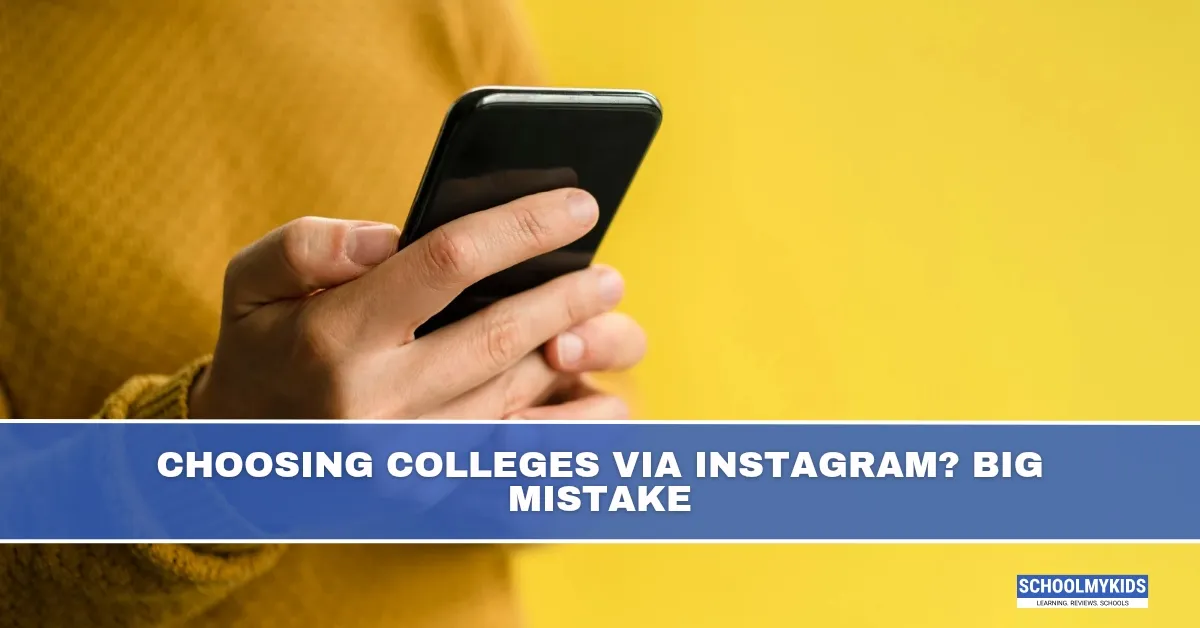Instagram is great for campus aesthetics—sunlit libraries, festival reels, and glossy placement announcements. But choosing a college primarily through Instagram is risky. Social feeds are marketing channels, not due diligence tools. This guide explains what Instagram can—and cannot—tell you, the red flags to watch for, and a practical process for making a sound decision.
Why Instagram Isn’t Enough
- Curation vs. Reality: Feeds highlight “best moments,” not everyday classrooms, lab access, or hostel conditions.
- Metrics That Mislead: Likes, views, and comments reflect social reach or ad spend, not academic quality or outcomes.
- No Context for Claims: “100% placements,” “international exposure,” or “world-class faculty” often lack definitions, methodology, or evidence.
- Influencer Bias: Student ambassadors and creators are incentivized to showcase positives; negative experiences seldom trend.
What Instagram Can Be Useful For
- Culture & Student Life: Clubs, fests, volunteering scenes.
- Event Cadence: How active the campus is across the year.
- Announcements: Application windows, scholarship reminders, webinars. Use IG as a starting snapshot—never the basis of your final decision.
Red Flags in College Social Media
- Overemphasis on “highest package” without median/role details.
- Generic employer logos without clarity on job roles, locations, or number of offers.
- Stock-style imagery of labs/classrooms, no raw/student-shot content.
- Comment moderation that silences queries or blocks tough questions.
- No academic substance: Few posts about curriculum, capstones, publications, or labs.
The Evidence You Actually Need
- Accreditation & Approvals: Confirm recognized accreditation, program approvals, and any recent audits.
- Faculty Depth: Department-wise faculty count, qualifications, research or industry projects, student-faculty ratio.
- Curriculum & Assessments: Syllabus recency, capstone/thesis requirements, project studios, continuous assessment vs. rote exams.
- Facilities You’ll Use: Labs, workshop hours, software licenses, studio access, library digital resources, hostel and healthcare.
- Internships & Placements
- Career Services Quality: Aptitude training, mock interviews, alumni mentoring, career fairs, off-campus support.
- Costs & ROI: Tuition breakdown, all add-ons (hostel, exam fees, lab fees), typical living expenses, scholarships that are actually disbursed (not just advertised).
- Student Support & Safety: Counseling, grievance redressal, anti-harassment committees, medical facilities, campus security.
- Alumni Outcomes: Graduate studies, entrepreneurship, domain-relevant roles after 1–3 years—not just “first job” headlines.
How to Verify Claims (Step-by-Step)
- Collect Documents: Prospectus, academic handbook, program-wise curriculum, fee sheet, placement report with methodology.
- Talk to People (Not Just the Admissions Team)
- Sample Questions to Ask Students/Alumni
- Cross-Check Consistency: Do verbal answers match official reports and what’s shown online?
Quick Reality Checks for Placement Stats
- Ask for department-wise medians. A single campus average hides variance.
- Differentiate CTC vs. take-home. Ask for cost components.
- Verify offer counts. “Dream” and “super-dream” labels can be one-off.
- Don’t count internships as jobs. Clarify conversion rates to PPO.
Smart Use of Instagram During Research
- Mine for Contacts: DM student club pages to request alumni introductions.
- Timeline Consistency: Check if “achievements” appear once or recur across years.
- Unscripted Content: Look for classroom clips, project showcases, Q&A sessions with faculty.
- Ask Public Questions Politely: Note how the account responds; evasiveness is a signal.








Be the first one to comment on this story.